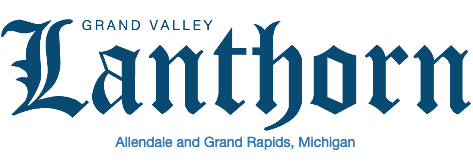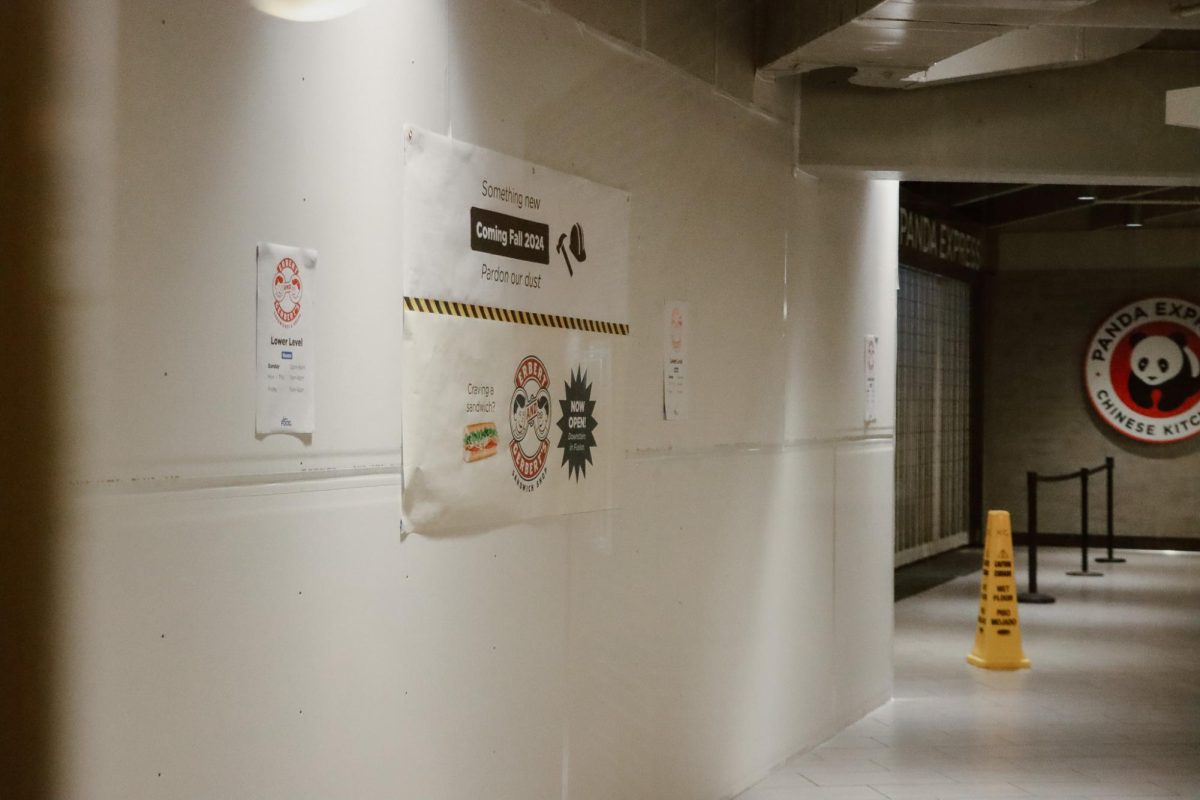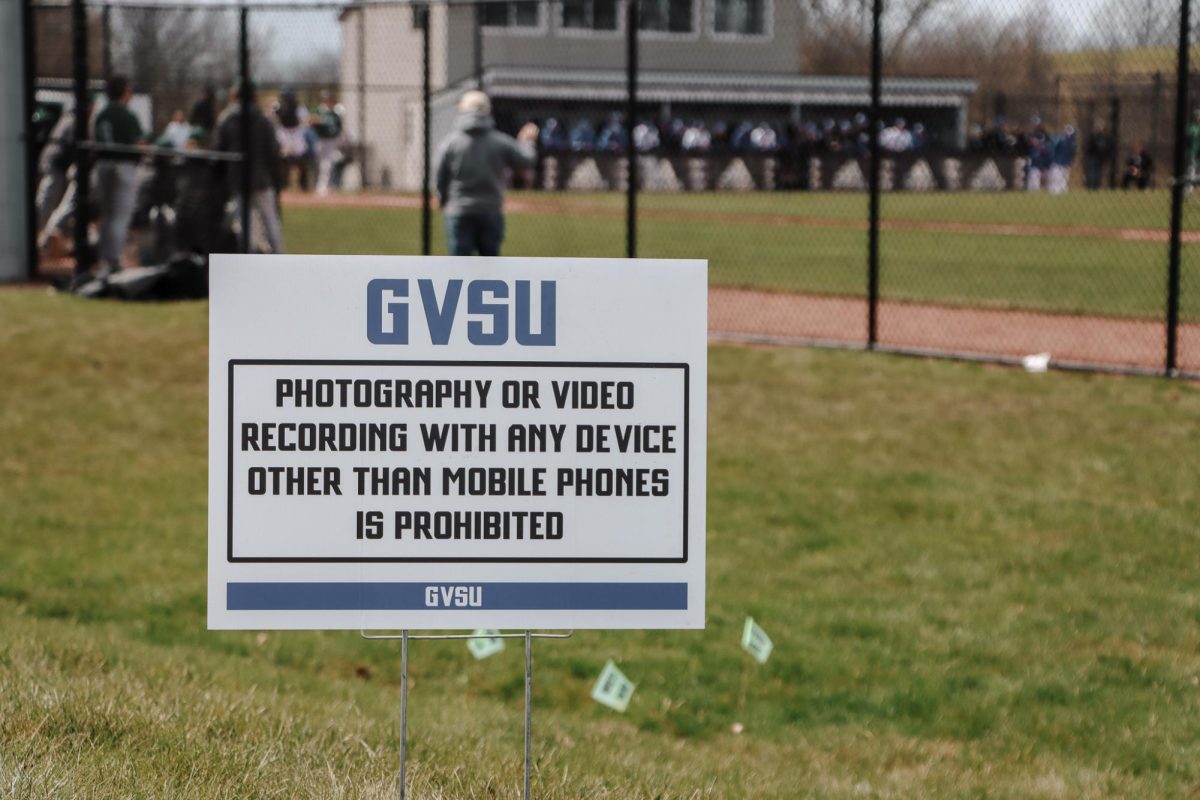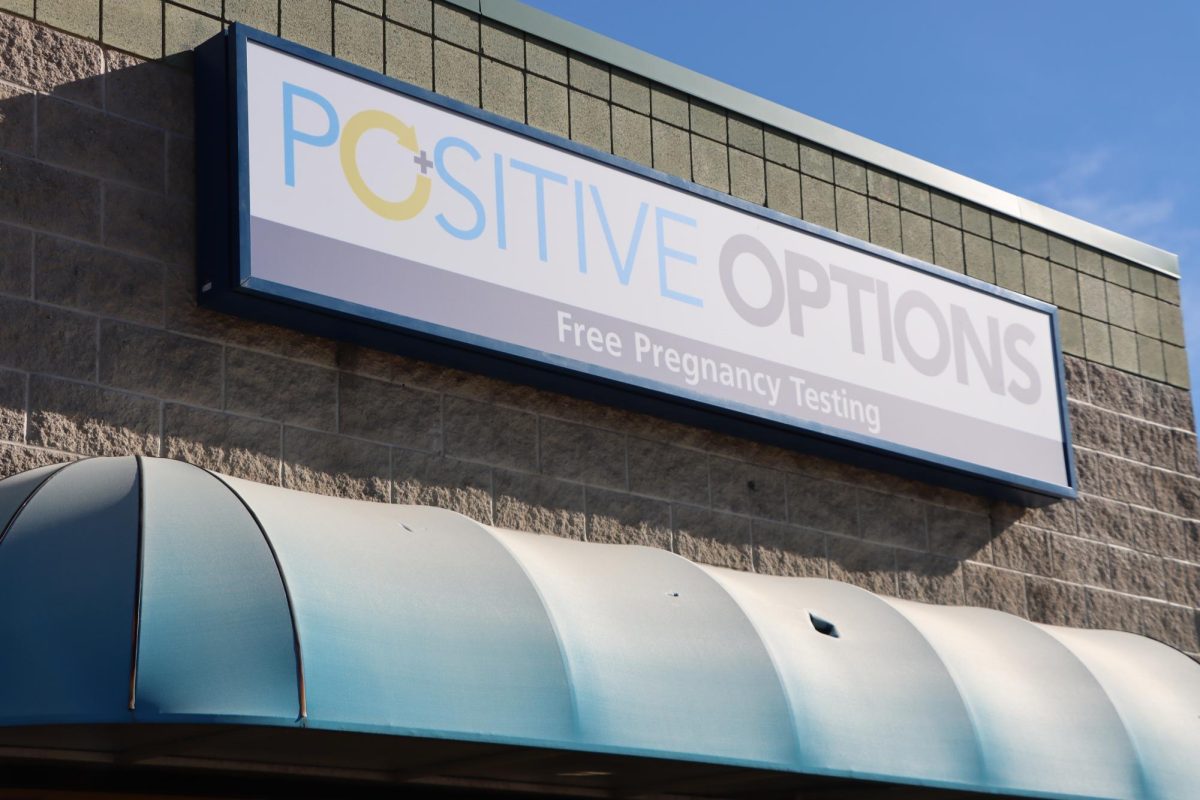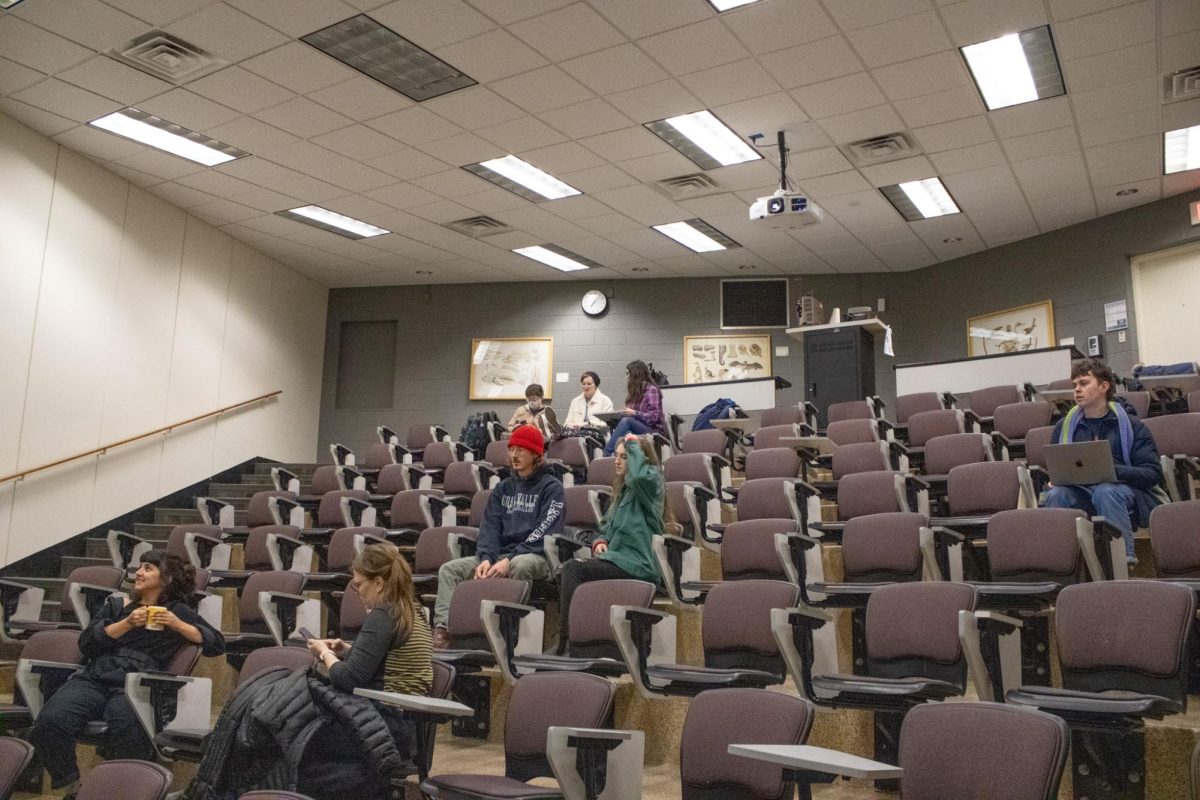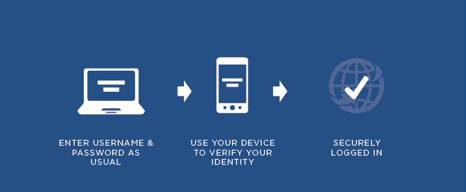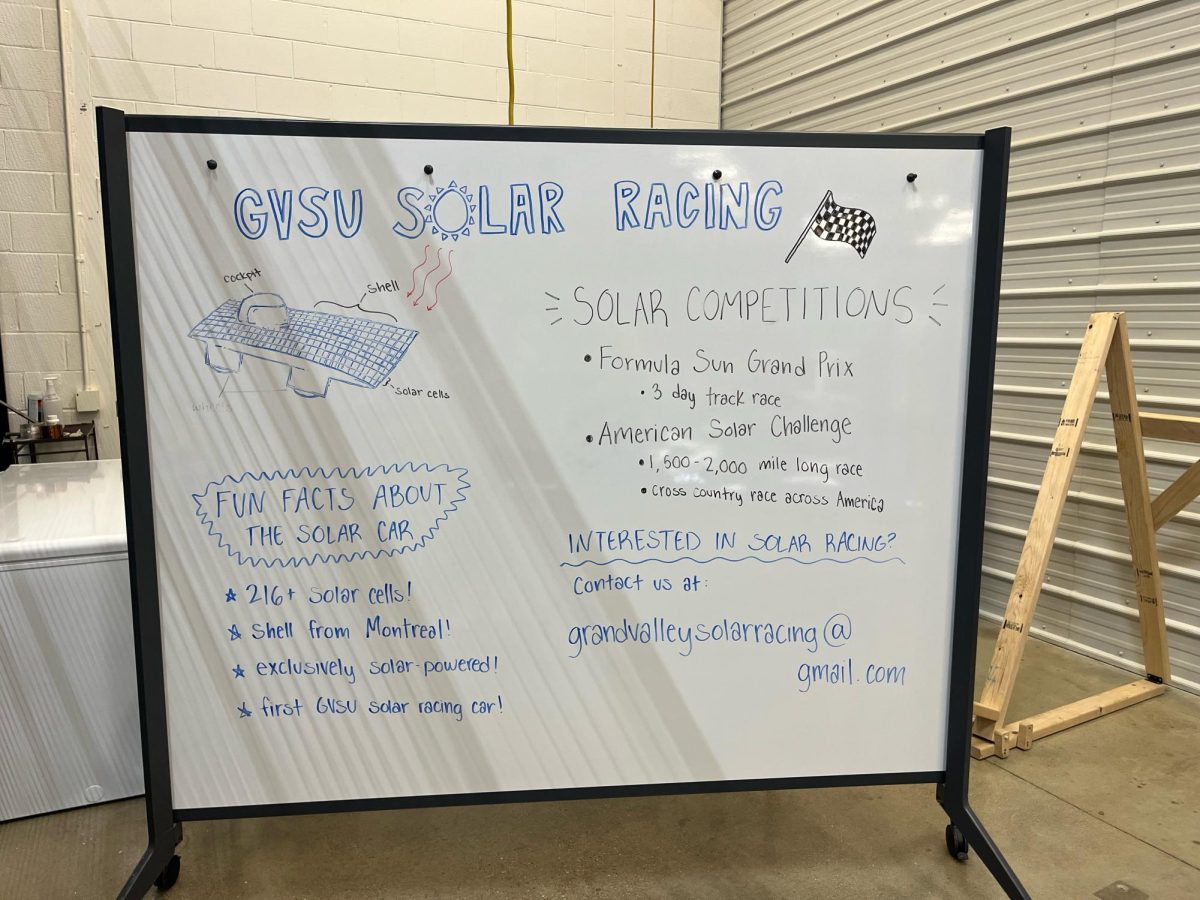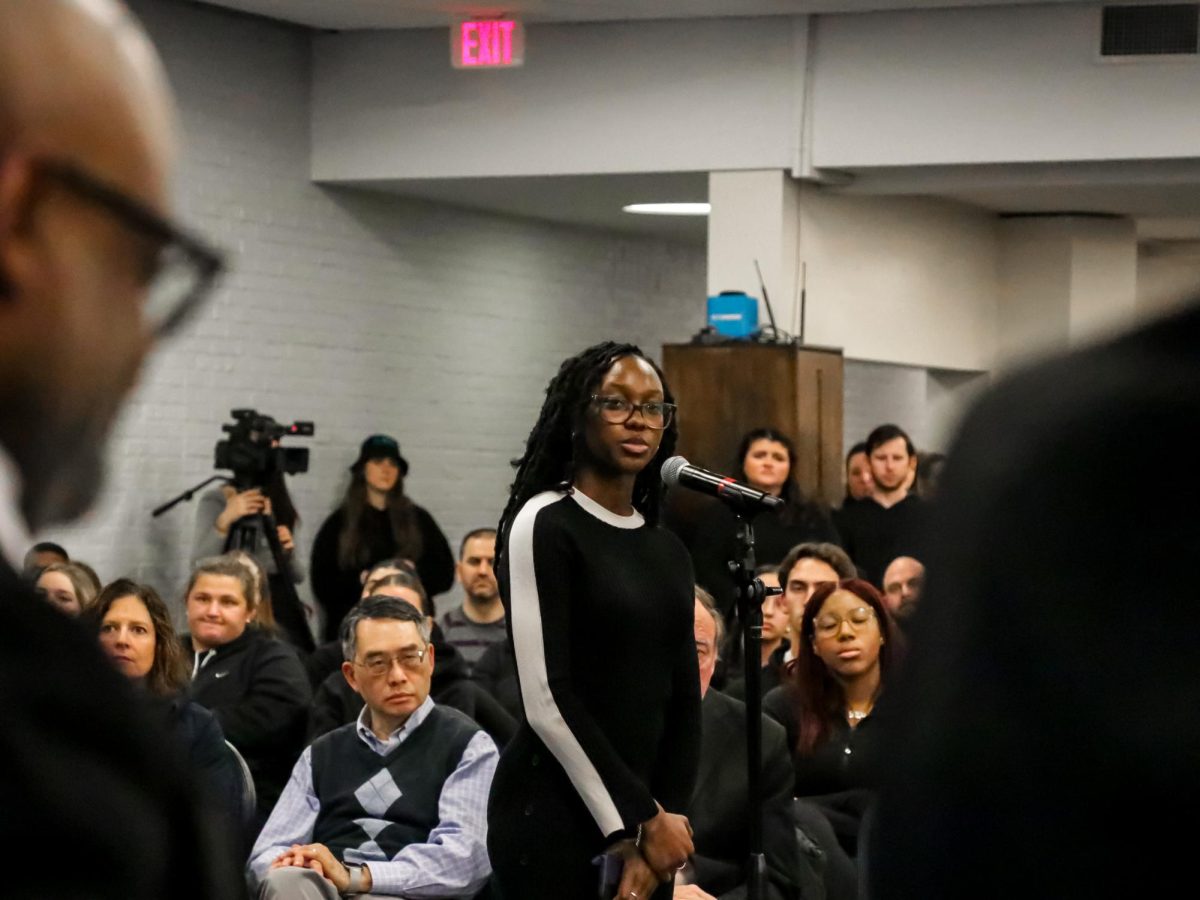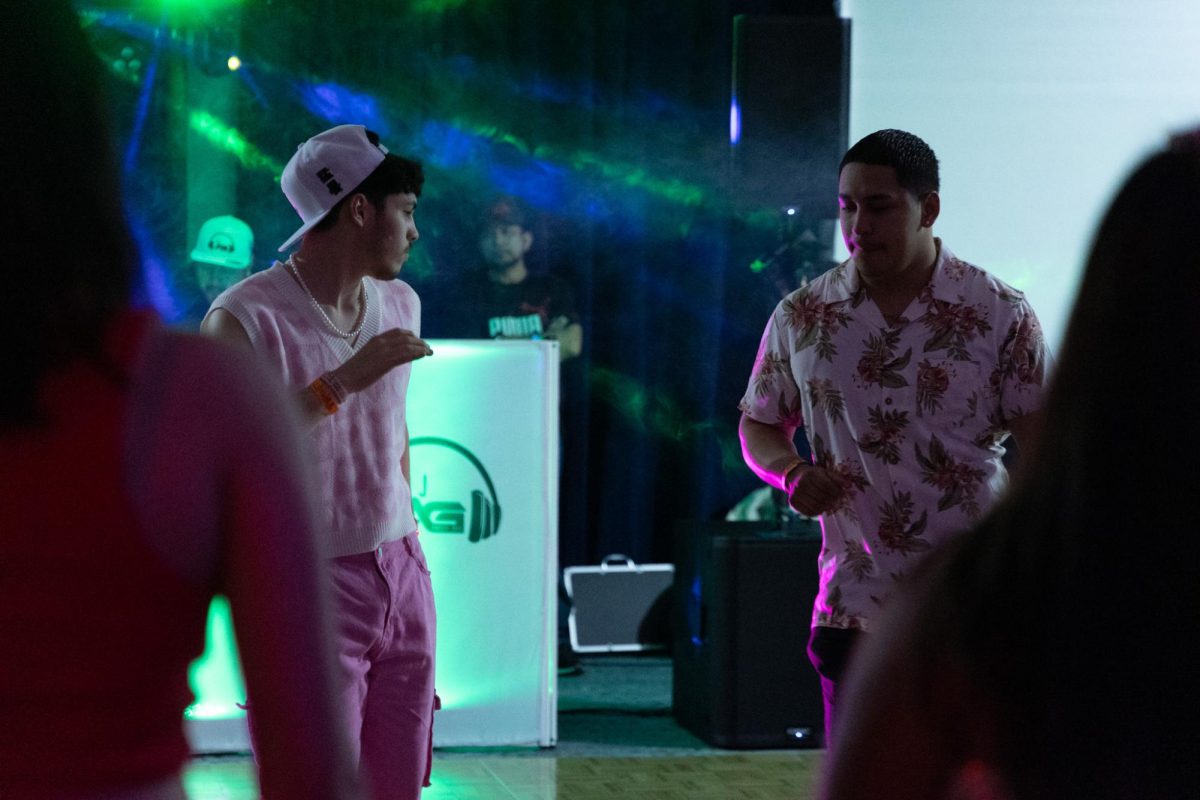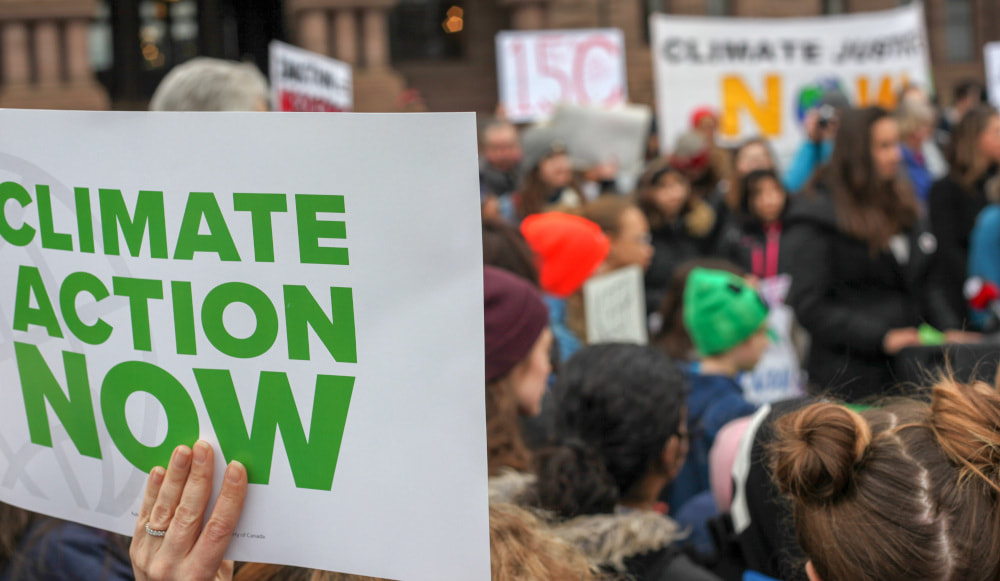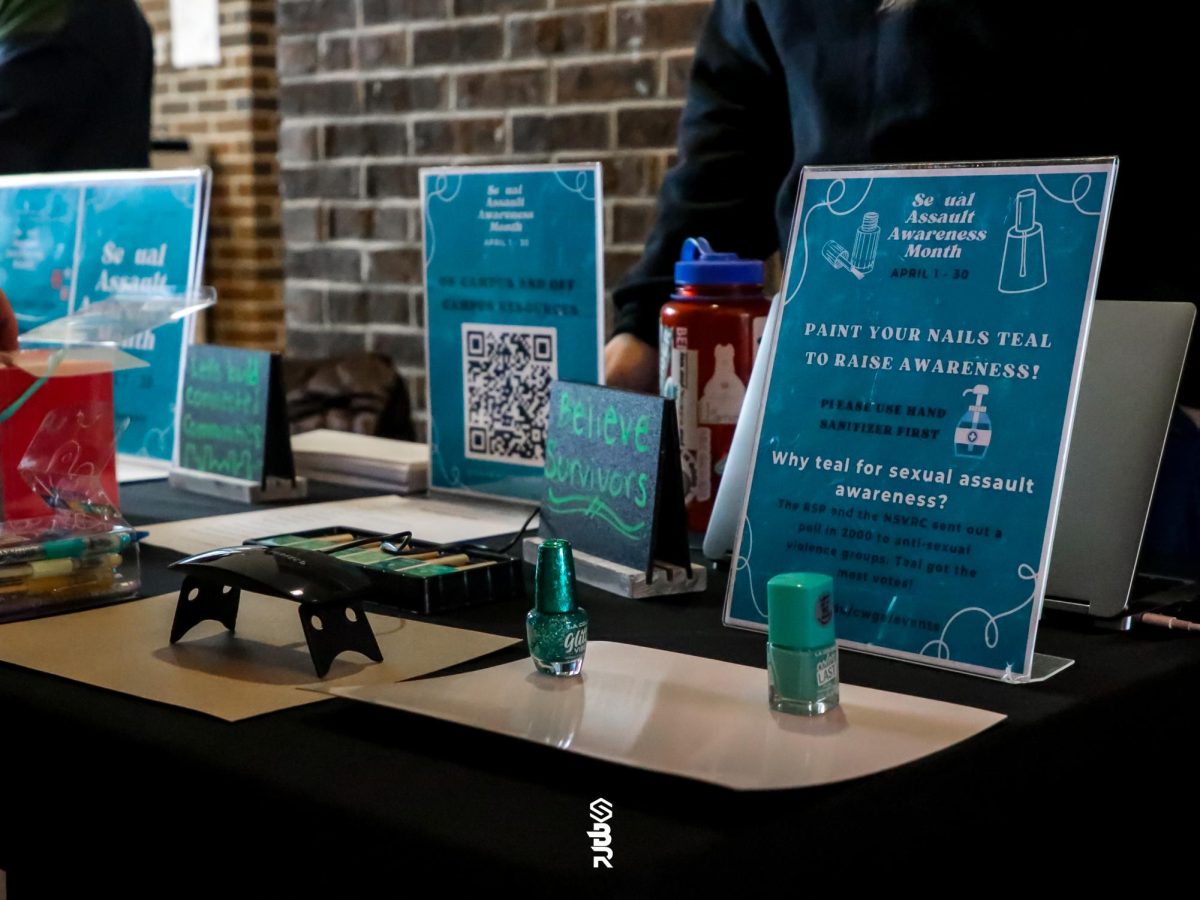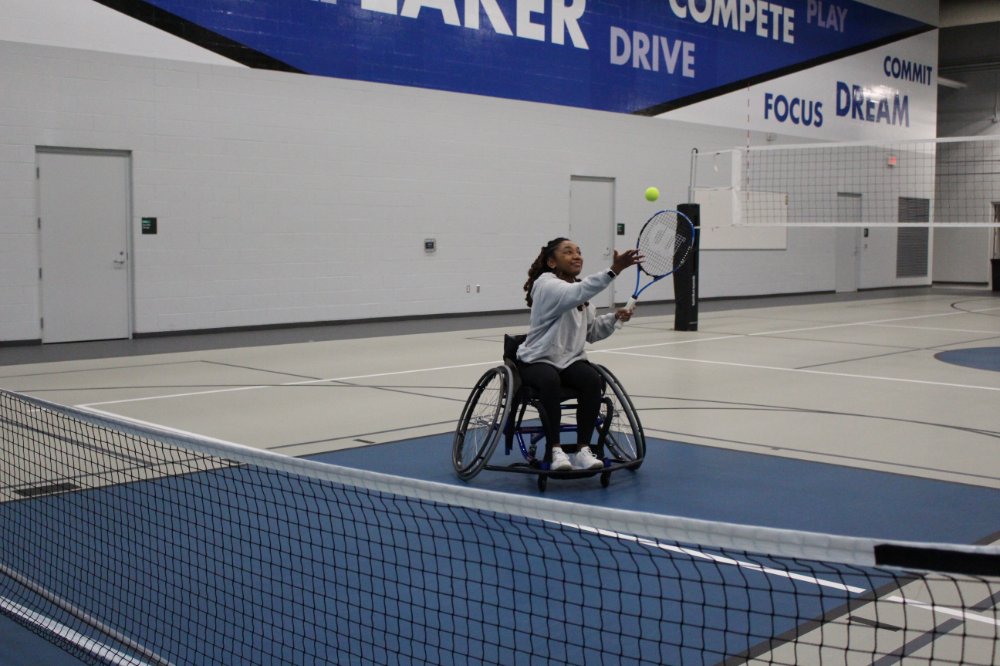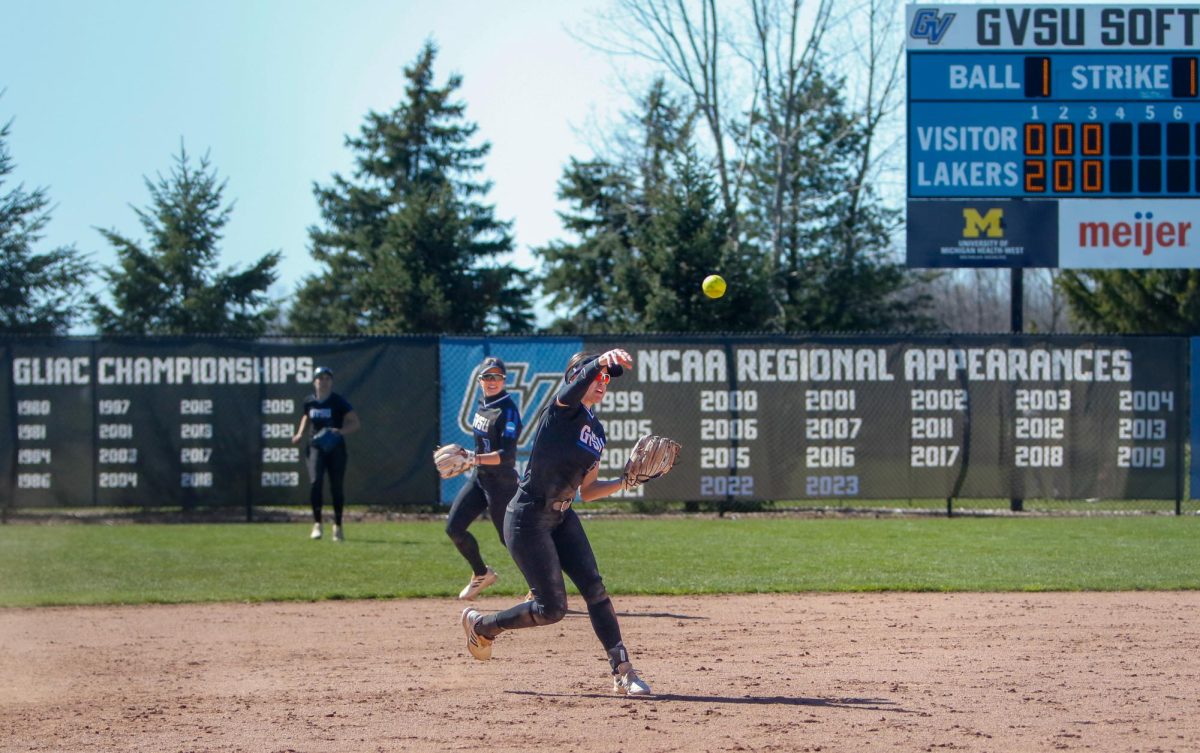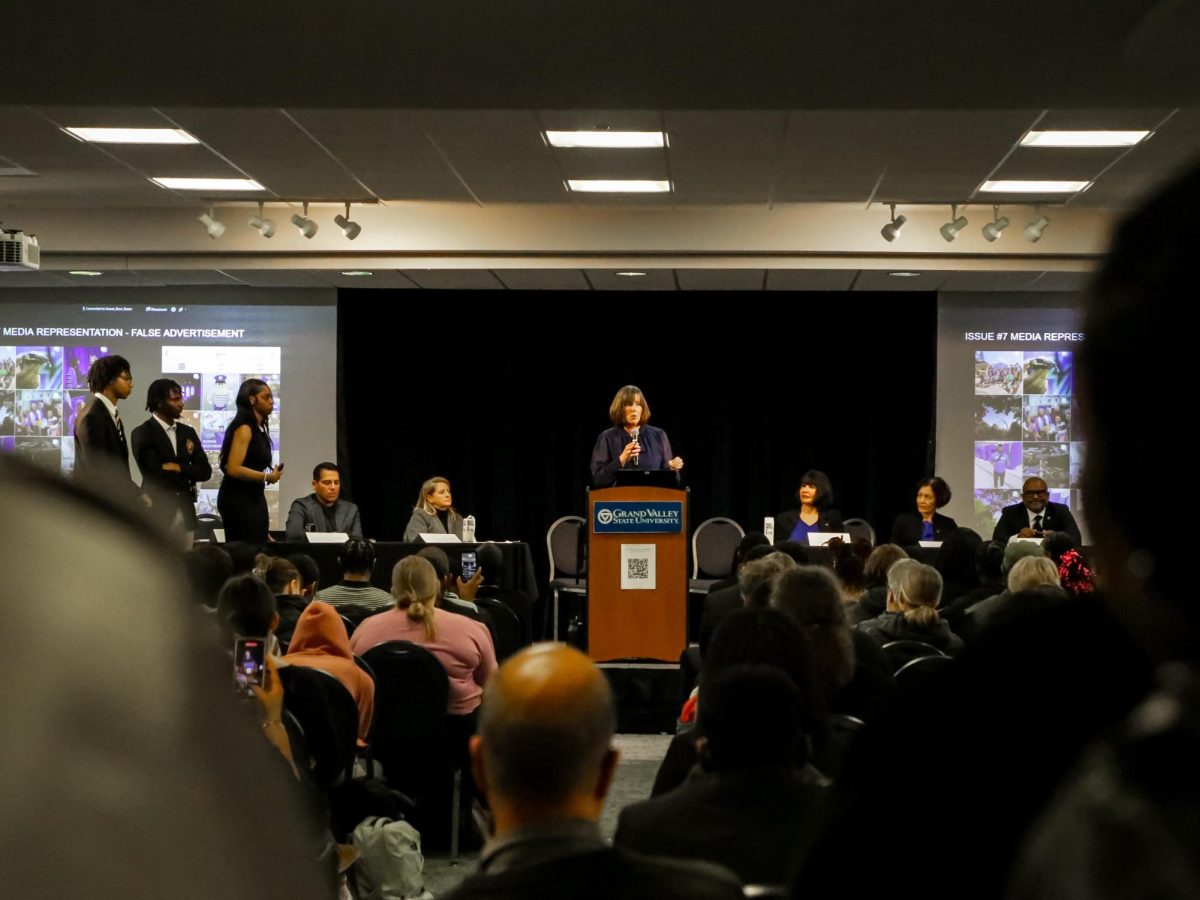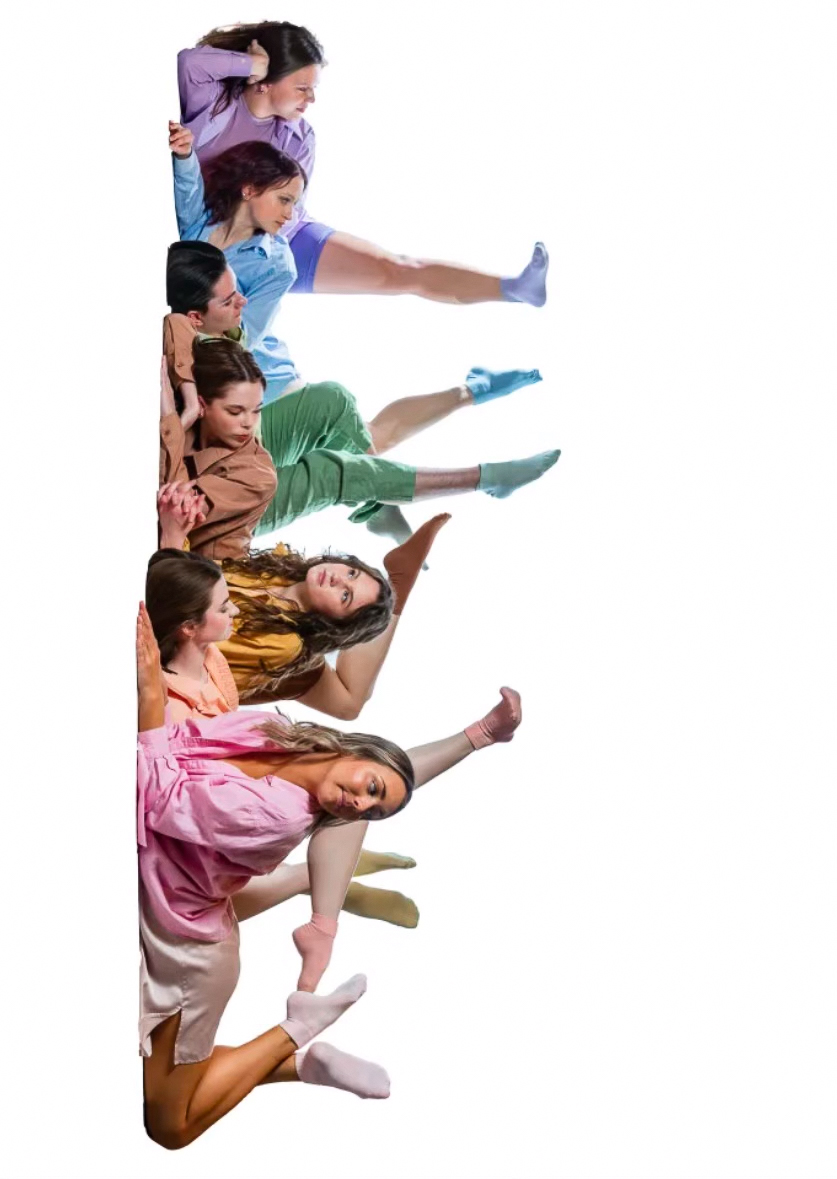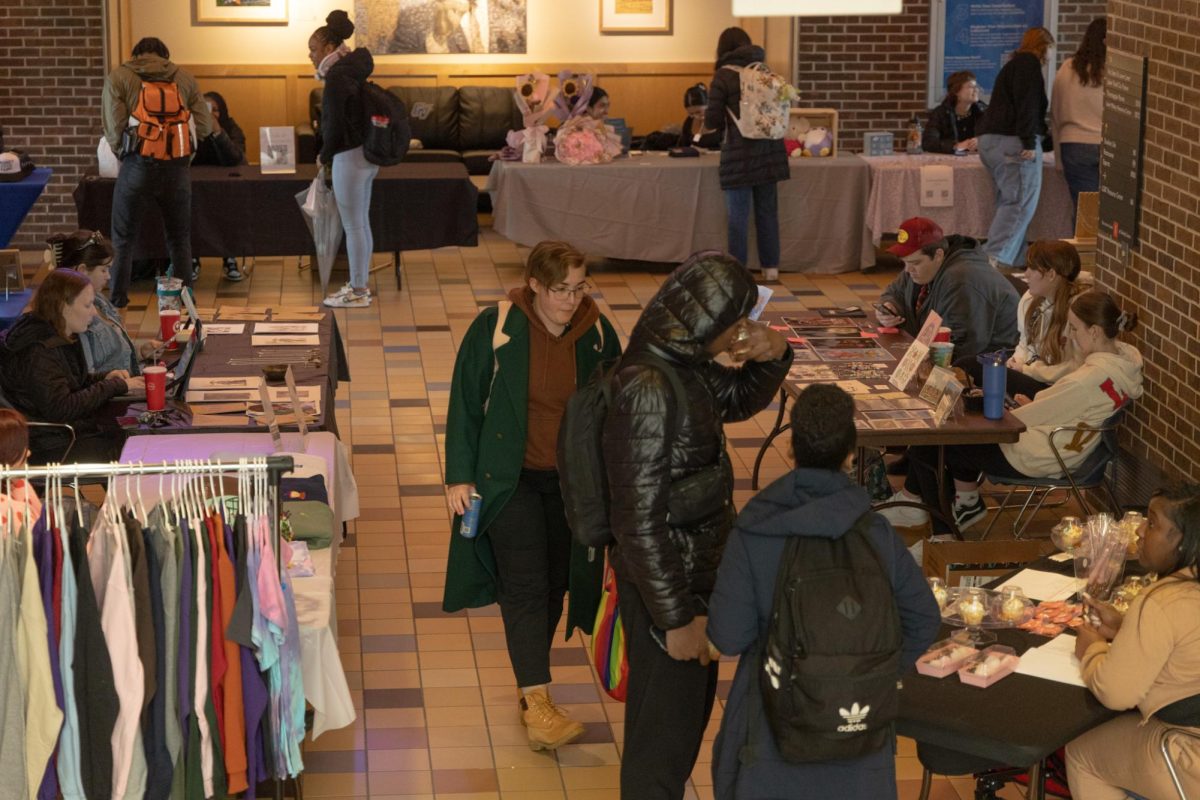Following the paper trail
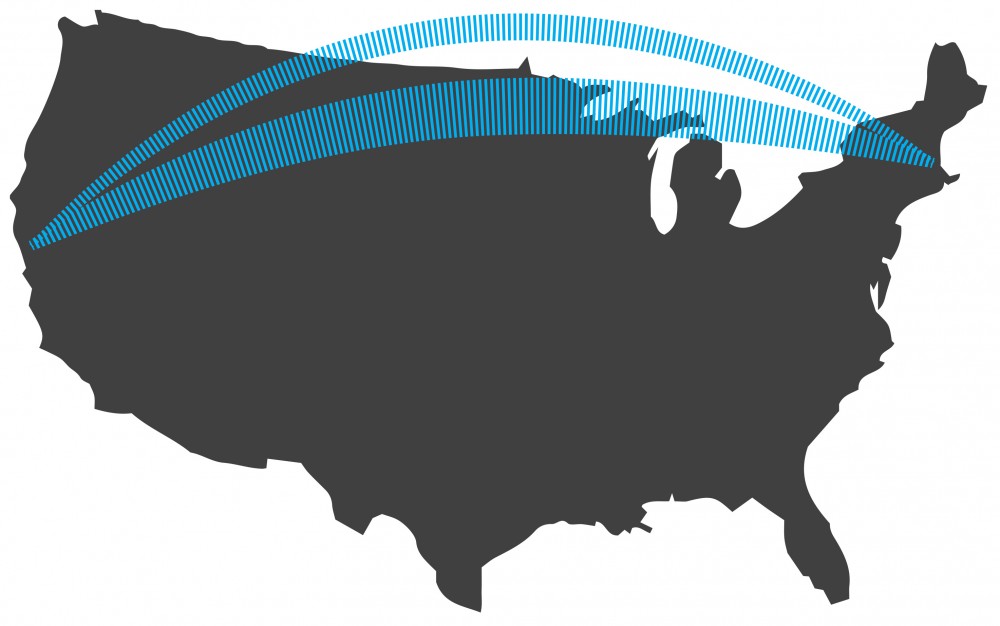
Dec 2, 2013
If the amount of paper used during one academic year at Grand Valley State University could be stacked into a single pillar, it would be 133 times taller than the Cook Carillon Tower on GVSU’s Allendale Campus.
GVSU is estimated to have used between 39.5 million and 40 million pages during the 2012-2013 school year, university representatives said.
That much paper would cover an area of about 450 football fields, or if each page was laid out end-to-end, it would measure 6,944 miles long. That’s more than enough paper to stretch from New York City to San Francisco and back again, or from GVSU’s campus in Allendale, Mich., across the Pacific Ocean to Seoul, South Korea.
PAPER WASTE
With about one-third of that quantity being waste, GVSU is addressing the issue by implementing a pilot program in the Mary Idema Pew Library and the Seidman Center on GVSU’s Pew Campus this year. The hope is to cut down on paper use.
“All of the printing in those two buildings will go to cloud printing where you can release it from any print station in those two buildings,” said Sue Korzinek, director of Information Technology at GVSU.
The new program, which cost about $200,000 to execute, requires students to make a conscious decision about whether they want to print a document.
“When you select print from either of those two buildings, it sends the print job to the cloud print area,” Korzinek said. “Then, you go to the release station and then swipe your ID or authenticate with your login account to see the jobs you have waiting at the printer.”
From there, students are able to select and release the print jobs they want, and whatever is left over will be deleted after 24 hours.
“The idea is to also allow for printing from your own devices to the cloud and then releasing them from our designated locations on campus,” Korzinek said, adding that this second phase will go into action later this year.
If the pilot program works as planned, Korzinek expects that the university will see savings from it in the next few years. She also said it would likely be implemented in other areas around campus, as well.
“Paper waste is typically around 33 percent,” Korzinek said. “So we certainly hope to save a good portion of that due to students forgetting to pick up something they printed.”
PAPER USE
University representatives estimated that the IT department used about 15 million pages of paper during the 2012-2013 academic year, which was the most for any single department on campus.
According to GVSU’s Facilities Services website, the school recycled 554.1 total tons of paper, cardboard, books, glass and tin, but the university doesn’t have specific numbers for the amount of paper recycled.
“We only track co-mingled paper, plastic, tin and aluminum as a group,” said Steve Leeser, operations supervisor of Facilities Services.
Though these numbers give only an idea of how much paper is recycled, there is no definite way of telling how much paper is wasted.
“For one thing, there can be a great deal of variation on how the term ‘waste’ is defined,” said Jerrod Nickels, manager of the University Bookstore. “For example, users may be printing a lot of material that they intend to print and which goes into their file or notebook, but which could really be read or accessed online.”
Nickels said the student computer labs are probably the largest source of waste, and the new cloud printing program will hopefully cut down on some of that.
“This (program) will not only help protect student confidentiality when printing documents, but it is believed that the use of this technology could significantly reduce paper usage—and waste—by as much as 30 percent as students make better, informed decisions about what to print or not print,” he said.
Nickels also oversees the Copy Center, which provides more specific copying and printing services for GVSU, and the convenience copiers and printers that are located throughout campus in various locations like hallways and common areas.
These convenience machines used somewhere between 11 million and 11.5 million pages of paper during the 2012-2013 school year, and the Copy Center used about 8 million.
“Overall, copier usage has significantly declined in recent years as faculty move toward the use of online forums such as Blackboard for syllabi, assignments and other materials,” Nickels said. “At the same time, student printing in labs has continually increased.”
Academic departments on campus used about 5.5 million pages all together.
“Usage is pretty much spread across campus with the larger academic departments creating a larger share of the copies (and) prints,” Nickels said.
PAY–PER PAGE
According to data provided by GVSU’s Procurement Services, the university spent nearly $421,000 on paper last year through Office Depot Business Services Division.
“Office Depot has won the contract for the university’s business through the last several bid processes, and office paper is a part of that contract,” Nickels said.
Through Office Depot, GVSU bought about $3,700 worth of 100-percent Total Recycled Content (TRC) paper, which made up less than 1 percent of total purchases.
The bulk, about 56 percent of paper purchased, was 30 percent TRC—with the IT department claiming the lion’s share of it, spending $212,000. The remaining amount—more than $181,400 worth—was zero percent TRC paper.
However, the Copy Center also purchases from Michigan Office Solutions, a local company, which provides more specific types of paper.
“Copy Services purchases paper from a local paper company because the Copy Center needs access to a variety of papers in various weights, colors and qualities for the large range of print needs required by the university, and these cannot be supplied by Office Depot,” Nickels said. “We also use this company to provide paper for the convenience copiers.”
As part of the contract, GVSU pays this vendor to provide maintenance for the Copy Center’s machines. The IT department’s staff currently handles minor repairs and maintenance for lab printer issues.
“As with any copier contract, we pay MOS a fee based on the number of ‘clicks’—meaning copies or prints—that each copier produces,” Nickels said. “Our click charge is a fraction of a penny per print.”
The largest chunk of that click charge goes to upkeep and repair of those machines.
“This charge includes the cost of all parts, labor and the toner required to make copies,” Nickels said. “There are no additional service fees for parts or repairs to the copiers, and the click charge stays constant for the duration of our contract with MOS.”
Less than one-fifth of a penny per click pays for a MOS technician to fill the machines with toner and paper, and the technician can also fix jams and basic repairs, “so he is serving multiple functions, not just filling paper in machines,” Nickels said.
Another local company, Applied Imaging, sells and supports the larger equipment used by the Copy Center.
“The click charge for repairing these machines is even less than our convenience copiers—again, a fraction of a penny per print—because the machines are larger and more elaborate and require fewer repairs,” Nickels said, adding that the charge also includes cost of repairs, parts and toner for the copiers in the Copy Center.
PAPER PRESERVATION
With the new cloud printing program implemented this year, GVSU is currently looking into solutions to cut down on the the amount of paper used on campus, but sustainability steps have already been in process.
“In Copy Services, we have directed our copy centers to order and use paper with a 30-percent recycled use content,” Nickels said. “We’ve also worked with our vendor to implement a recycling program for copier toner cartridges across campus. Since one of (the bookstore’s) responsibilities is management of deliveries for Office Depot, we have worked with that vendor to move toward the majority of campus deliveries in reusable bins and paper bags rather than in cardboard boxes.”
Norman Christopher, executive director of the Sustainable Community Development Initiative, said there have been several approaches taken at GVSU to cut down on waste.
“Having copiers print double-sided copies, as a default, is one option,” he said. “Using discarded, one-sided copies for printing of draft letters and presentations; purchasing 30-percent PCC (post-consumer content) recycled paper for the copiers is another.”
Having students use some of the new technology and resources, such as rental iPads and laptops, for project work can also help, he said.
“Additionally, GVSU faculty members are being encouraged to go ‘paperless’ in their classes (and) have students submit all papers and homework electronically,” Christopher said. “All of the above are best practices that have been used on campus to help reduce the amount of purchased paper overall.”


